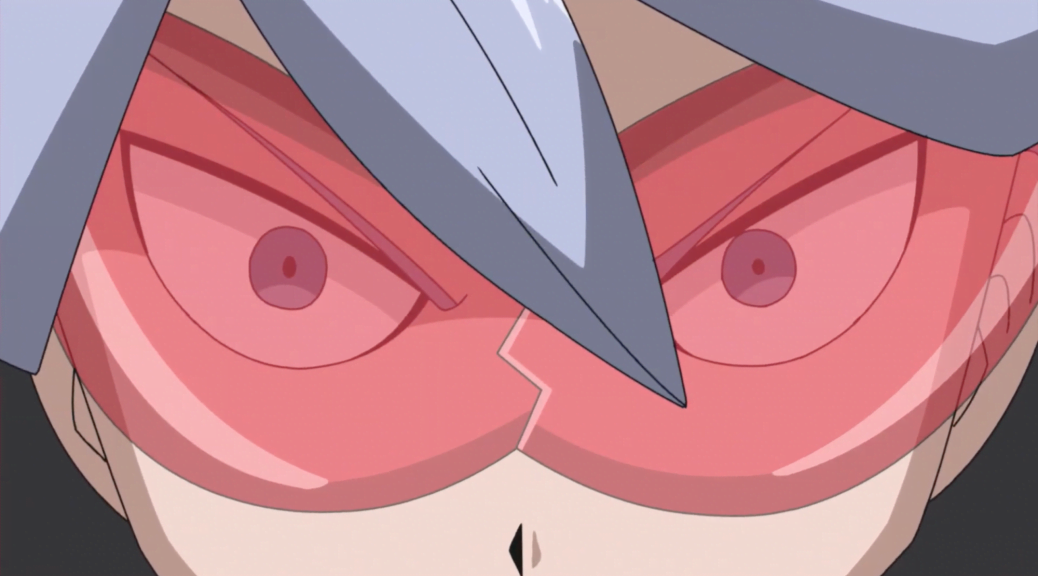Because I Like Lear
I’m sticking with Pokémon Masters because of DeNA’s fantastic storytelling.
DeNA’s latest mobile game, Pokémon Masters, has gone through a rocky start. A lack of free gems, the scouting currency, and the sluggish co-op gameplay have been cited as reasons behind the displeased and dwindling playerbase. But desire to obtain all the log-in bonuses and daily mission gems (as paltry as they may be) aside, I find myself not just sticking with the title, but actively hooked. While the desire to see things through at least until my favorite Trainer is added is absolutely a factor, I do not find myself hoping they arrive sooner rather than later—I am perfectly content with waiting. Although certain mechanical elements could absolutely use some sprucing up, DeNA’s strength lies in character depiction and narrative comprehension.
Masters takes full advantage of its all-star cast and has them interact in ways that are both believable and effective for supplementing their character in ways that are simple but meaningful. They have to be simple due to the title’s limitations: story segments are short, which is understandable for a mobile title, but they are not too short, nor do they feel empty. In addition, from what we know, Masters is not considered “canon” to the main series, so it would be inappropriate for characters to behave in ways that are completely uncharacteristic, even if it would give them development. What we see instead are existing characters interacting intelligently in order to exemplify their positive character traits—and by “positive,” I mean strong, well-defined, effective.
In the main series, many minor characters, such as Elite Four member Phoebe, feature barely-notable quirks at best, predominantly to establish their personality. As these characters rarely appear more than once, their character traits exist to direct their manner of dialog. Masters showcases understanding of this by having characters interact with those from other games and putting the spotlight on these exchanges, even if they are short-lived. Phoebe, who is known to care for her grandmother, a generic NPC similarly surrounded by spirits as she works on Mt. Pyre, grows attached to the elderly Ghost-type specialist, Agatha. Flannery, a nervous wreck after inheriting her Gym from her grandfather, is looked after by another grandfather figure in Blaine. Two underdeveloped Bug Trainers, Bugsy and Viola, are given a chance to expand on what exactly they love about the type as they team up. While they ultimately remain rather one-dimensional, this at least grants them the additional opportunity to showcase what makes them unique. By understanding that each of these characters is completely defined by what essentially exists purely to drive how they speak, having them speak to anyone besides the silent player will always grant some form of improvement.
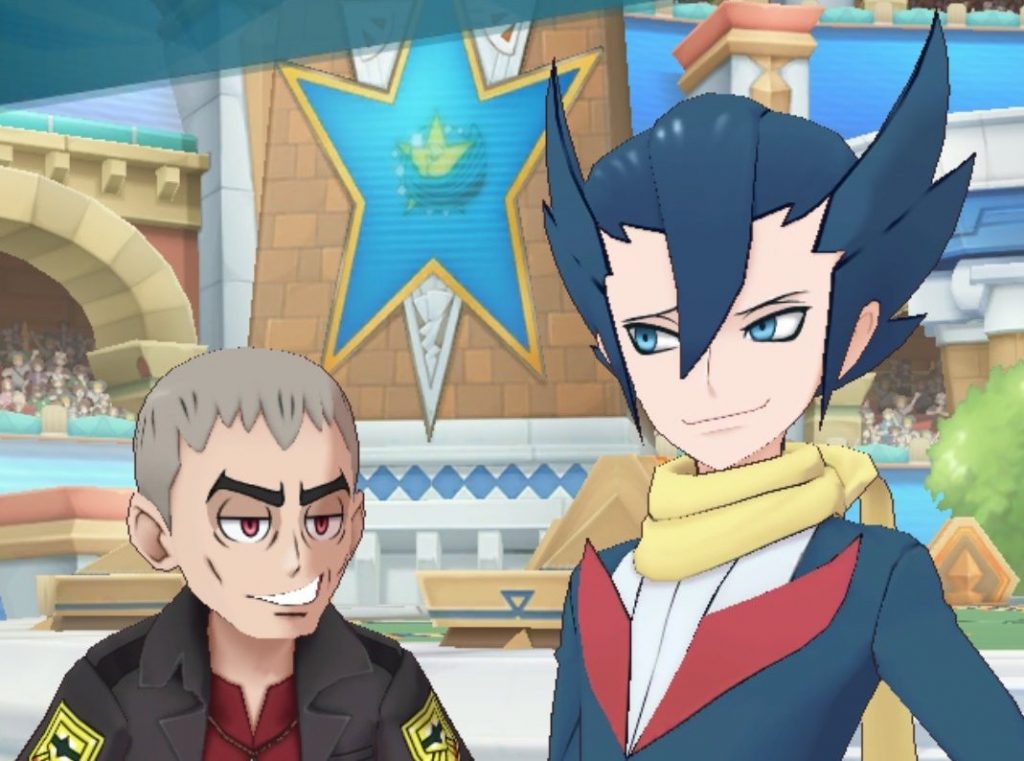
For characters such as Nanu and Grimsley, insight is given on occurrences relating to the main series: in their case, their unlikely similarities result in Nanu inviting Grimsley to visit his region of Alola, which does occur in Sun, Moon, Ultra Sun, and Ultra Moon. Even already-established relationships get expanded beyond the assumption that these characters know each other by default, as is the case in Rosa’s Sync Pair Story with Brycen. Her involvement in the Pokéstar Studios is solidified as a character trait, as well as seeing a new side of Brycen, one that cares for his coworkers. In addition, even the Pokémon are given personalities: Rosa’s Snivy is similarly invested in their movie roles and shows interest in directing, while Brycen’s Zoroark uses its Illusion Ability in a new way, referencing how actors have to take the guise of others.
On the surface, being able to see these otherwise-impossible interactions is engaging and well-executed enough to keep me interested in whomever gets added. Characters who I would before never give a second glance, such as Pryce and Brock, have now wormed their way into my heart. DeNA’s strong character depiction also goes hand-in-hand with their other major strength, which is their comprehension of the main-series narratives.
Because the majority of main-series Pokémon games feature weak narratives, the games that do utilize a strong story are usually under-appreciated. It doesn’t take much to best the non-attempts of the likes of Red and Blue, nor does it take much to best the failed-attempts of X and Y, so when a game such as Black and White does take the game narrative to the next level, players do not feel obligated to overthink it. “It’s good, for a Pokémon game, because the villains and rivals are more fleshed-out than usual. And it was epic when the Gym Leaders stopped Team Plasma.” This kind of surface-level analysis leaves an incredible amount of the game untouched, leading to immense amounts of details going completely unnoticed by the vast majority of players.
But DeNA does not fall into this category of people, as evidenced most strongly by the latest Masters chapters. In Interlude 3 Lear, with the help of his ever-supportive lackeys, Sawyer and Rachel, is searching for his stolen Hoopa. It is revealed that he used the Hoopa to bring together the best possible Trainers to Pasio for the sake of improving the PML. Cheren overhears this and assures Lear that he will need to enlist help in order to save Hoopa and prevent the calamity that would surely ensue if Team Break, its captors, were to use its power to summon countless powerful Pokémon. It is here that Lear proclaims that he, as the future king, must be able to solve the problem himself lest he be unworthy of his station. While not overtly stated, the pieces are starting to come together: Lear’s complex from losing to “the Trainer in the red hat” (presumably Red), along with his adamancy to do everything himself, may not be the result of some belief that he is better than anyone else. Rather, he feels it is necessary to “be better” and accomplish feats alone in order to live up to supposed standard of what being a king entails.
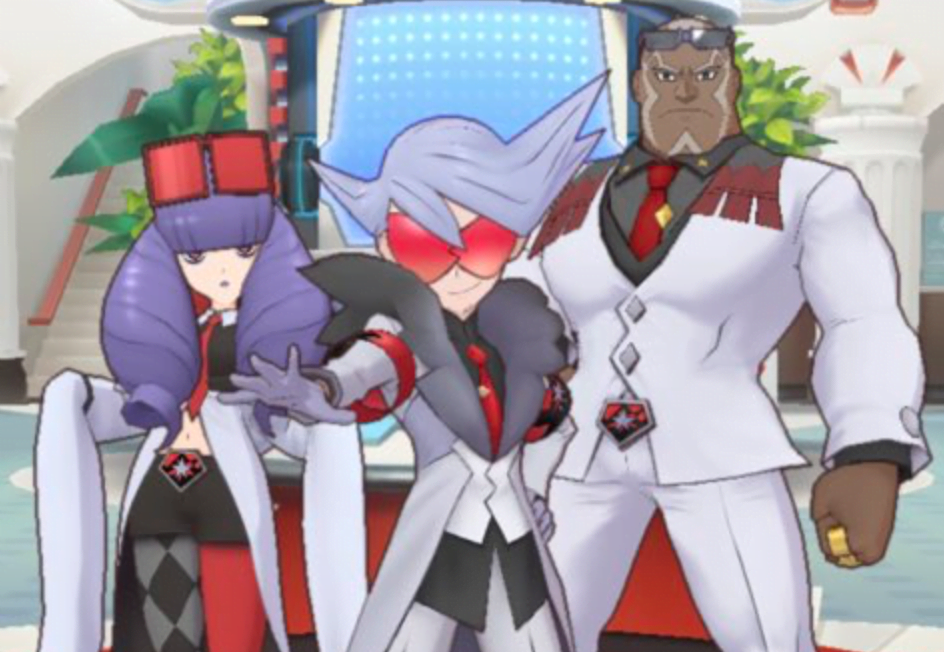
The ability to create a compelling character does not necessarily mean DeNA understands the deeper machinations of the main-series Pokémon narratives, however. What clues us into this is what Cheren says after Lear and his assistants leave: the easy association between “gen 5” and “kings” would be N, the king of Team Plasma in Black and White. But Cheren likens Lear not to N, but to the champion, Alder. In reality, the only similarities N and Lear share are in title; on the other hand, Alder is no king, but had a similar pressure laid upon his shoulders. One of the many overlooked character arcs of Black and White is Alder’s, the champion of Unova who has abandoned his post after his Pokémon’s death to enjoy the more lighthearted things in life. While this choice does act as a point of interest in Cheren’s questioning of his own motives, it leads to trouble for Alder and the rest of the region later—as N grows closer to his goal of becoming the Champion and using said newfound influence to convince everyone to release their Pokémon, Alder realizes that his time away from his station has made his battling rusty, and he will likely be unable to stop N.
As the Champion, Alder tries to take full responsibility for saving his region—to the point where, even after he comes to terms with the fact that the player will have to stop N in his place, he still orders the Elite Four to not interfere if N happens to defeat them. Alder, more than just being a figurehead in Cheren’s character growth, is a representation of the idea of the Champion, who is given the pride of one. He does not want an essentially novice Trainer to save the region when he is supposed to be the strongest Trainer there is. DeNA recognized this and drew an appropriate comparison between him and Lear, which resulted in Cheren’s involvement in this scene being warranted as well. Even Masters‘s original characters are able to have meaningful interactions with the established Pokémon characters because DeNA is aware of all the potential they possess—and this knowledge also results in more engaging original characters overall as well.
At the current rate of progression, Lear is being set up as a redeemable ally rather than a villain or member of the villainous team, Team Break. This may lead some to hastily note that thus far Team Break is comprised of nothing but “generics”—nameless NPCs with no discernable character traits. It is true, but it is not a negative point. An unavoidable element of gacha games is the “collection factor:” even if the player does not inherently want every single character, they want the option to potentially obtain them. For all the fans of characters like Giovanni or Cyrus, would it be fair to neglect them the ability to obtain their favorite Trainer simply because said character in question is a villain in another game? Gacha games based on existing intellectual properties will usually create new villains not only to try and flesh out their new world, but to be better able to justify the distribution of existing villains—it will be far easier to justify the likes of Cyrus joining the side of the “good guys” when he is not the game’s overarching villain.
But once the game starts introducing new villains, the ugly side of “collection factor” starts to make itself known. The new character(s) will garner fans who will, naturally, want to obtain them somehow. Yet they are tied directly to the plot, so there will need to be some sort of explanation for why they join the player. This is usually handled quite poorly, as evidenced by Intelligent Systems’s Fire Emblem Heroes Book II villain, Surtr. These characters, whether they were written well to begin with or not, are usually shoehorned into being obtainable, and their canonical power levels are either neutered even if their strength was once an aspect of what made them popular, or they are kept the same at the expense of game balance. Once again, we need not look farther than Surtr as an example of a playable villain gone wrong on all fronts. In the worst of cases, a villain could even be made playable while they are still a villain in the story! Yet again, Fire Emblem Heroes offers us this with Loki—and let us all be frank, the “I’m not the same character you know…” excuse was not engaging or meaningful even the first time.
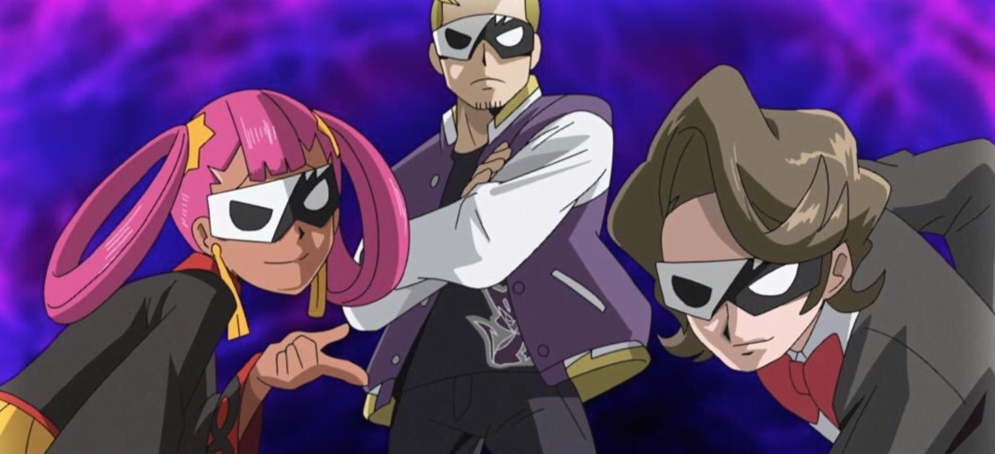
Games that do not allow players the option to obtain their villains do so for the sake of keeping the story and characters intact, but the players are usually disappointed. At the end of the day, they wish a compromise could somehow be reached that maintains the integrity of the character but still allows them to be collected. DeNA avoids both these issues entirely by making Team Break comprise entirely of “generic” Trainers. There are still villains, so a conflict exists and drives the story forward, but there is no pressure to add the villains as scoutable sync pairs. If we were to one day be able to scout for generics, we could just obtain the classes without their masks—they are no longer villains. We can get the Trainers without ruining the villains.
The key element here is how Lear is not a villain—he is an antagonist. He is being set up (and set up well!) for a redemption that will make it feel rewarding—not forced or unnecessary—when we finally can scout him in the future. The intelligence and foresight to separate Lear from the villains and make the evil team a bunch of generics is an utterly brilliant narrative- and gacha-benefitting move on DeNA’s part.
Now I have heard whispers—and by “whispers” I mean full-blown belting—of the idea that the story events have been weak in execution. It was rather humorous to see Dragalia Lost fans try to tout that their anniversary event had such fantastic narrative while the concurrent Masters Hilda story event was foolish, as if they had not had their fair share of events with silly stories—one of which was literally attending a circus and nothing more while the continent at large was being thrust into turmoil. As confirmed by the developer letters, story event execution will continue to evolve, and we will see even more categories of events in the future, including ones where the player can obtain new sync pairs such as the Legendary Event. Not only is it silly to compare an anniversary event (which I would hope is handled better than a trip to the circus) to an event early in another game’s life, but I would say even an event as silly as Hilda’s showcases storytelling competency and understanding of the main series as a whole.
In the original Black and White games, NPCs would line up for Casteliacones in droves, to the point where the player could only buy one on Tuesdays. The idea is admittedly rather silly in and of itself, but does not appear visually all too odd in the games themselves, which are completely sprite-based. In Masters, however, the silliness is amplified through the to-scale models and the cones selling out before the player and their group can buy theirs. It is in no way the strongest example of storytelling the game has to offer, but it is still further opportunity to see unlikely characters interact as well as to see another perspective on main-series occurrences. And as event execution continues to change, we can look forward to even more fun or even serious stories.
Our first-ever Legendary Event, featuring Giovanni and Mewtwo, is upon us. It establishes Giovanni as a villain but subdues his sphere of influence so that it is neither Masters-world-breaking nor completely out-of-character for him to join the player on the side of good. The sheer number of times he needs to be defeated is a great indicator of just how hard he is to convince. The reference to the dimension-hopping nature of Team Rainbow Rocket was also a nice touch.
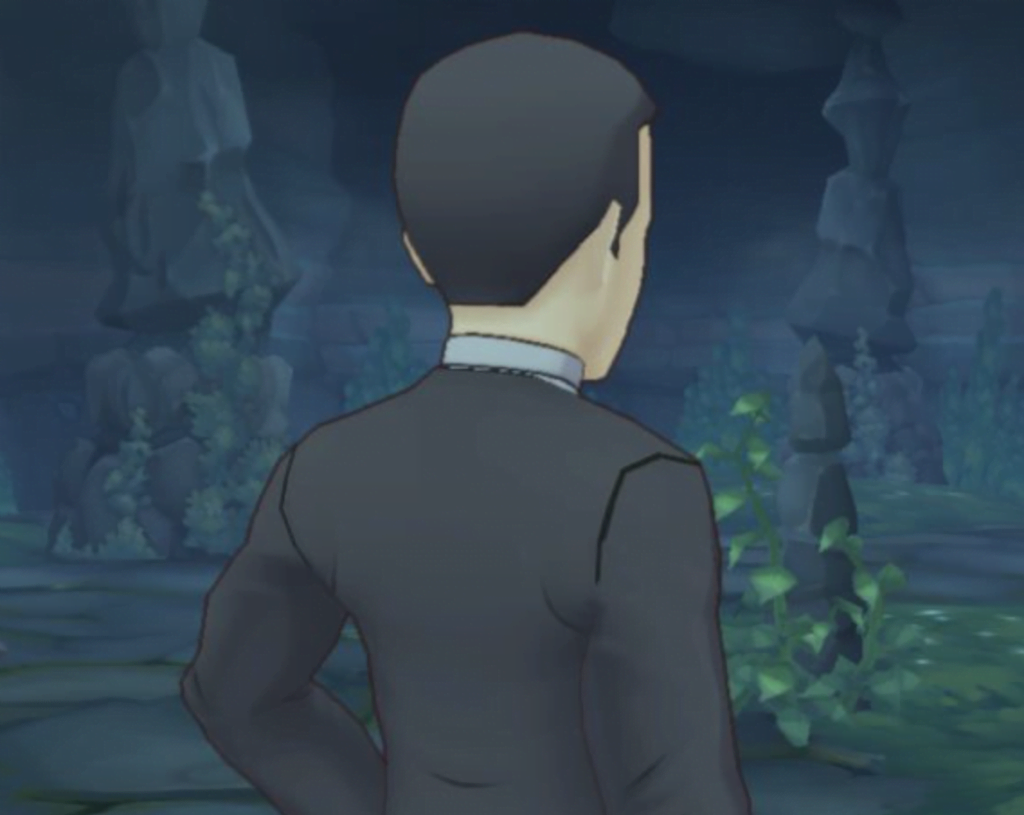
The only thing I would have personally liked to have seen was some form of confrontation or admission of Giovanni’s status as a Kantonian Gym Leader. It was bizarre for world-building when no one, not even other Gym Leaders, seemed to know who the Viridian City Gym Leader was, much less that he was the leader of the region’s most dangerous group of organized crime. With two Kantonian Gym Leaders, Brock and Misty, leading the way, I would have liked to see some reference to that, explaining how Giovanni managed to get away with taking that position, but overall the story was what it needed to be. I am certain that for more narratively-meaningful villains, we shall see similarly in-depth event stories.
The justification for Giovanni joining once the 800 vouchers are obtained is also well-handled. Nobody trusts him entirely once the ordeal is over, which is completely understandable. He tosses around the idea of “starting over” on Pasio, but it is just a vague thought—reasonable, not outlandish for him. The player deems they can keep a close watch on him, preventing him from stirring up more trouble on the island so long as he is a part of their ranks. Ultimately, by joining forces, Giovanni will be able to test his and Mewtwo’s strength against the strongest collection of Trainers possible in the PML—this is 100% in-character for him. A hint of character growth and a completely believable reason come together to perfectly justify one of Pokémon‘s most notorious villains siding with the good guys, something other gacha games struggle to execute.
Altogether, Masters has incredibly solid storytelling, and more and more gameplay improvements continue to be announced then put into effect. There continues to be more and more reason to want to see Masters through this rough patch. For myself, I greatly look forward to the future characters we will see and the new life that will be breathed into them. This attention to the main-series narratives and care given to both the new and existing characters is ultimately what keeps me most engaged with the game. I want to see Lear’s character growth through to the end (and hopefully be given the opportunity to scout him). The “rival” of Masters, Paulo, shows similar potential and is hinted to be a part of the upcoming PML-related chapters. And I want to see my favorite main-series characters added to the game and interact with other Trainers from throughout the series. While gacha games have a tendency towards “Flanderization,” the diluting and consuming of a character by focusing on a sole character trait, Masters instead leans in the opposite direction. I do not dread the treatment my favorite character may receive when being added to the game like I do in other titles. And as a result, the story is among the best I have read in a gacha game. In the end, what more can I say? I just really like Lear.
Edited by bobandbill, Siddhar, and Zach.
